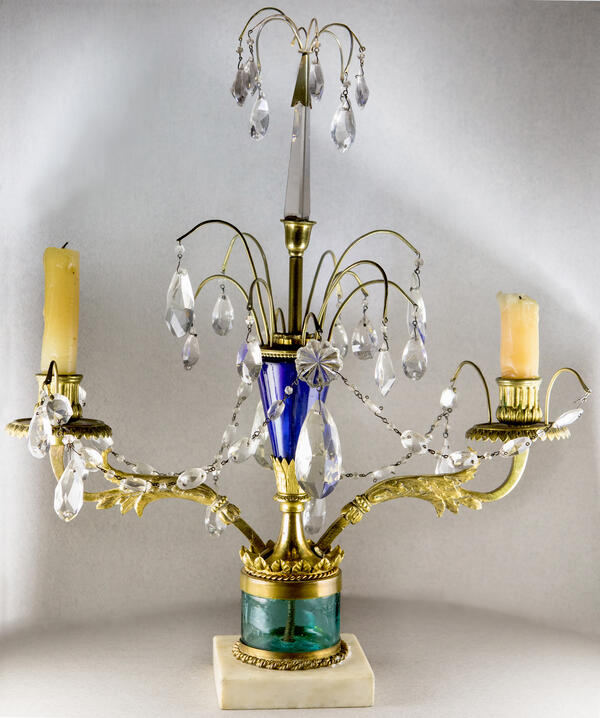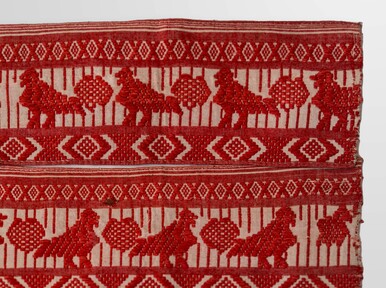In 18th-century Russia, there was a fashion for girandoles nicknamed “dandy candelabra” by the enlightener Florenty Pavlenkov. Although girandoles were already quite widespread in France, Italy, and England, Russian enterprises did not merely make copies of foreign items but instead created unique artworks engaging professional jewelers.
The term can be traced back to the French word “girandole” and the Italian “girandola” meaning “pinwheel”. Initially, this word was used to refer to fireworks in the form of a “fire wheel” with tubes for launching rockets, arranged in a horizontal rotating circle. Based on the similarities with these inventions, other items have also been referred to as “girandoles”, including round multi-arm candlesticks, fountains with several jets, and even jewelry.
Until the 1760s, there were Elizabeth’s girandoles with lavish Baroque décor of crystal or glass stars and oak leaves with amethyst shades, and faceted vases or relief flasks as the base. The structure was fortified with gilded wire so that the pendants wavered in the air, making the fire dance.
In the last quarter of the 18th century, Catherine’s girandoles came into fashion. Their pendants were smaller but more diverse: oval, rhombus, and almond-shaped, featuring obelisks and garlands.
A Russian girandole was distinguished by a vase made of colored glass in the center. Until the early 19th century, it was mostly made of blue glass, and after 1802 — of ruby glass. The base was made of marble, metal, or gilded hardwood.
Such candlesticks could be free-standing or tabletop. They were placed on special “pedestals” on console tables, bedside tables, and drawer units, or used in pairs opposite the mirror, creating twice as much light.
The signature look of Russian girandoles is associated with the name of the Palladian architect Nikolay Lvov. It was his idea to use glass vases, stylized baskets, and crystal garlands shaped like fountain jets in the design of such candelabra.
The displayed paired girandoles are made in the
Classicist style with elements of Baroque. The embossed floral and geometric
patterns remained popular in the décor until the early 1790s. Later, they were replaced
by a stricter, minimalist column-like pattern.



